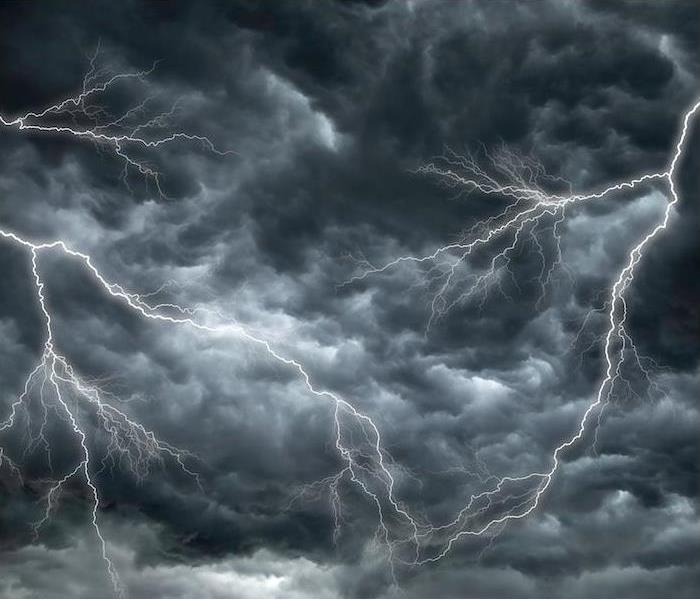Things to Check for if Lightning Strikes Your Home
10/5/2019 (Permalink)
 Lightning is a dramatic display from a thunderstorm, but it can also cause serious complications. Fires, damage to structures and damage to electrical
Lightning is a dramatic display from a thunderstorm, but it can also cause serious complications. Fires, damage to structures and damage to electrical
How Lightning Is Made
All thunderstorms are electrically charged, and this is what serves as a catalyst for every clap of thunder and bolt of lightning. When we see lightning, it is actually the thunderstorm offloading some of its energy, either through the clouds creating thunder or in the direction of the Earth.
Air is not an ideal conductor, which is why lightning often strikes through an object as it heads toward the ground. This is what makes homes so vulnerable and easily damaged by lightning strikes.
Because a home is full of wiring and water, lightning can travel easily through these things and cause extensive damage along the way. If your home has been struck, here’s what to check for:
1. Hot spots within walls. At around 500,000 degrees, lightning is often hot enough to ignite a house immediately upon striking. Additionally, it can cause damage to wiring so severe that it makes a fire likely to occur within the walls in the future. An electrician can perform an inspection to check for hotspots and make recommendations for repairs.
2. Damaged electronics. The voltage produced by a lightning strike is far more than what household electronics are designed to handle, and they can be severely damaged if they are plugged in when lightning strikes. Surge protectors can prevent damage from occurring, and you should always thoroughly check electronics after a strike.
3. Structure damage. The powerful shock waves that produce thunder can also produce damage when lightning strikes the ground. Because shock waves have been known to crack foundations and shatter windows, it is wise to inspect the home after a storm dissipates.
If your home has been affected by storm damages or lightning-related fires, give us a call today! We are experts in damage cleanup and can restore your damage quickly.






 24/7 Emergency Service
24/7 Emergency Service